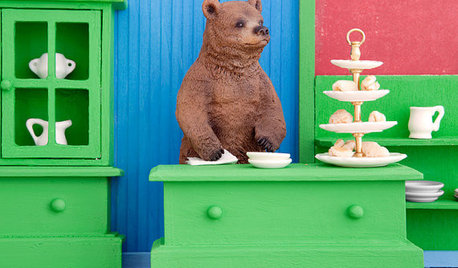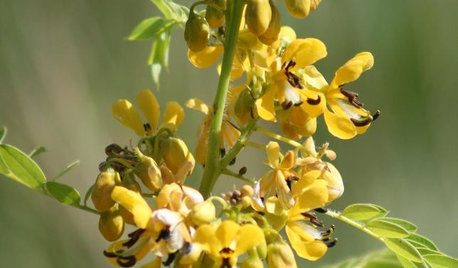Some folks here have lamented the down side to yards (use a lot of water, often get over fertilized and poisioned). However, I was reading an article today, and it seems to me the millions of acres of yards world wide might be put to a great climatalogical use if we just switched over to grasses bred up to reflect more sunlight. See the article below on one scientist making that suggestion for food crops.
A high-albedo diet will chill the planet
* 18:19 15 January 2009 by Catherine Brahic
* For similar stories, visit the Climate Change Topic Guide
The low-calorie diet is so 20th century follow the high-albedo diet if you want to be in with the latest trend. You could help save the planet from climate change and will be able to keep eating everything you do normally. (And you won't lose a gram.) You read it here first.
Researchers are proposing that one way of temporarily reducing global temperatures would be to replace existing crops with variant strains that reflect more solar energy back out to space. The overall effect would be the same as making large areas of the planet more mirror-like. Their calculations suggest this could cause average summer temperatures in temperate zones to fall by as much as 1°C.
Politicians have generally adopted the aim of limiting global warming to 2°C above 19th century averages, so a 1°C is not something to be taken lightly.
Plants reflects short wave energy back out to space much like snow and other light surfaces do. This is known as the albedo effect and is a key component of calculating the effects of climate change. As Arctic ice melts and is replaced by dark water, for instance, the region's warming is expected to accelerate.
Plants have higher or lower reflectivity depending on things like the shape and size of their leaves and how waxy they are. To Andy Ridgwell and colleagues of the University of Bristol in the UK, what is key is that different varieties of a same species can have more or less albedo.
Modelling the diet
"Different varieties of maize have different morphologies  their leaves are arranged in different ways from variety to variety," explains Ridgwell. Different varieties of barley and millet, two other major crops, have more or less waxy leaves.
Ridgwell and colleagues used a leading computer model to see what would happen if all crops worldwide were switched to higher-albedo varieties. They found that the global temperature averaged over 150 years would drop by 0.1°C. That's not much, but when the researchers took a closer look they realised that temperate regions would be far more affected than others.
In fact, because much of the land area in North America and Eurasia is taken up by agriculture, temperatures there could drop by as much as 1°C during summers. This would be welcome relief for regions which are forecast to suffer dangerous heat waves in the coming century.
"There is a real chance that dangerous levels of global warming could be realised. To avoid this, we need massive emissions reductions and soon. However, it is also prudent to plan in the event that this does not occur," says Chris Huntingfordthe UK Centre for Ecology and Hydrology. He adds that this particular proposal may have fewer unwanted consequences than other proposals to "geo-engineer" the climate, such as fertilising entire oceans with iron filings.
Bio-geo-engineering
Ridgwell's model suggests that crop yields would not suffer if farmers preferentially planted high-albedo varieties. Indeed for some crops yields might increase.
To be effective, the proposal, which the group call "bio-geo-engineering", would have to be rolled out world-wide. "It might sound a tall order to change the varieties grown of all major crop plants," concedes Ridgwell.
Farmers would need to be given incentives  most likely financial ones  to buy high-albedo varieties. The researchers say one way of setting up these incentives would be to make high-albedo farms eligible for carbon credits which could be sold on the carbon trading markets.
Ridgwell told New Scientist he had done "back-of-the-envelope" calculations that show that given the current price of carbon on the European carbon market, these credits could be worth $50 billion a year over 100 years. He says farmers could gain as much from selling the credits as they obtain from the EU biofuel subsidy.
"Climate change mitigation through plant breeding is a rather novel idea that merits consideration," says Eric Kueneman of the UN Food and Agriculture Organization. "The down side might be that if this were to be promoted, it would take 10 to 15 years to get the varieties developed and into farmers fields in a major way."














rdaystrom
rcnaylorOriginal Author
Related Discussions
Trough for water feature
Q
Decoupage Pressed Flowers
Q
WANTED: Your Opinion
Q
Building an Edible Garden Friendly House
Q
rcnaylorOriginal Author
dchall_san_antonio
rdaystrom
dchall_san_antonio
lou_spicewood_tx
rcnaylorOriginal Author
ronalawn82
andy10917
rcnaylorOriginal Author
rcnaylorOriginal Author